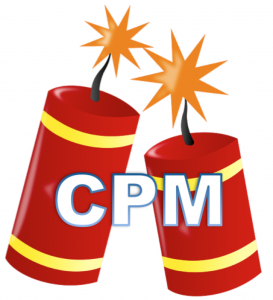The marketing department at Signal asked several people at the company to make digital advertising predictions for 2015. With their blessing, I’m publishing my predictions right here. I also added a couple of additional topics at the bottom.
The Ecosystem
2015 will be a big year for IPOs and consolidation. Startups will form in nascent categories, but not so much in established ones. Luma will produce a new set of Lumascapes to accommodate the rise of new categories. This is hardly a shocking prediction.
Cross-Channel
Cross-channel will be the rule in 2015. Companies with a single channel solution will be the exception (and the Dodo).
Programmatic
We’ll see the rise of the Meta-DSP where Agency systems will be plugging into DSP stacks via APIs. Smarter systems will be able to segment users across DSP buying systems and regain control of Frequency and Reach.
Native advertising
Native Normalization: Native ads will begin to follow responsive design techniques. “Standardized Native Ads” will become the biggest oxymoron of 2015. Native ad specifications are already working their way into the OpenRTB API Specification. The road to standardization is very short from that point on. Read more




 Every impression is put out to bid, along with that a user identifier is passed. This gives the buyers the information they need to make a decision, “Do they buy or not?” If the buying platform decides to track the user and build a profile on that user’s behavior, there’s little the publisher can do from a technology perspective. The shorthand for this misappropriation of information is Data Leakage.
Every impression is put out to bid, along with that a user identifier is passed. This gives the buyers the information they need to make a decision, “Do they buy or not?” If the buying platform decides to track the user and build a profile on that user’s behavior, there’s little the publisher can do from a technology perspective. The shorthand for this misappropriation of information is Data Leakage. For a CPA deal they’re estimating how many acquisitions they can send to the buyer for every thousand ad views. For CPC, how many clicks per thousand ad views. They’re boiling it down to a CPM because that’s how they can compare the deals. It works like this all the way up and down the funnel.
For a CPA deal they’re estimating how many acquisitions they can send to the buyer for every thousand ad views. For CPC, how many clicks per thousand ad views. They’re boiling it down to a CPM because that’s how they can compare the deals. It works like this all the way up and down the funnel. Identical bids are not unheard of, but they are rare. Bid prices are presented as a CPM value with up to five decimal places. That means that the actual impression can bid upon with precision down to eight decimal places. So in that rare event, when there are two or more matching top bids, the winner is chosen at random. This is only the tip of the iceberg, though.
Identical bids are not unheard of, but they are rare. Bid prices are presented as a CPM value with up to five decimal places. That means that the actual impression can bid upon with precision down to eight decimal places. So in that rare event, when there are two or more matching top bids, the winner is chosen at random. This is only the tip of the iceberg, though.

